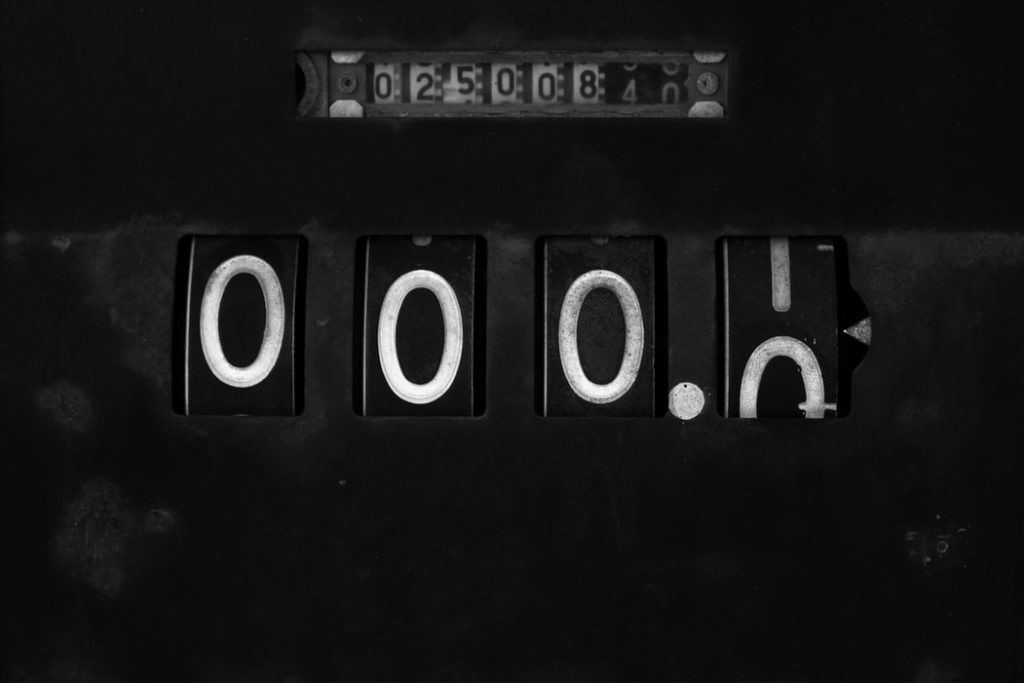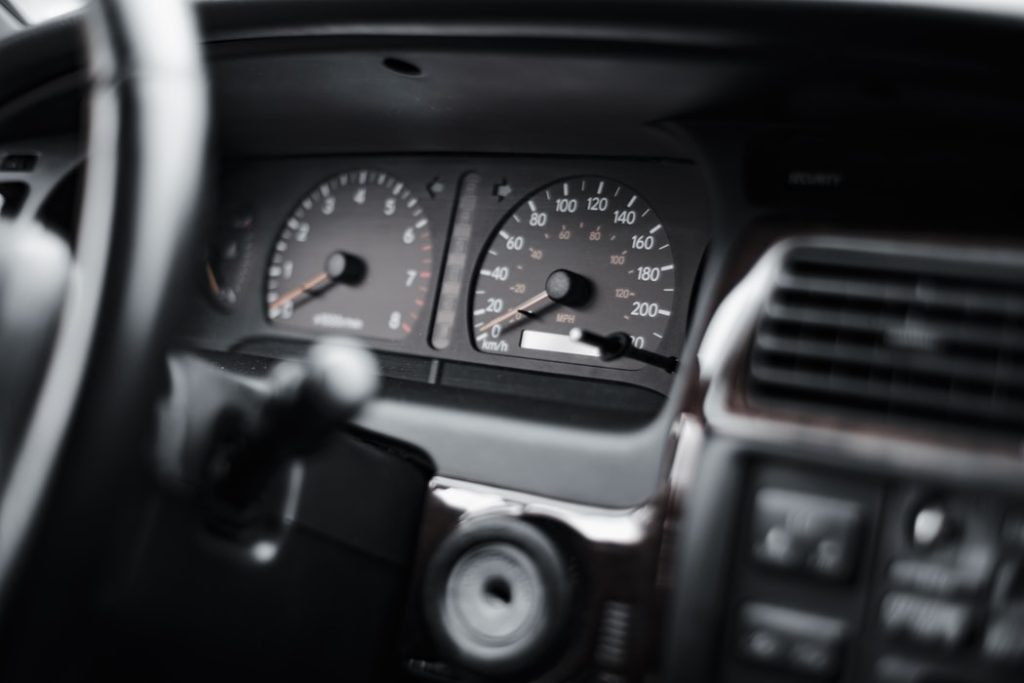
If you’re trying to find a reliable used car, then you should certainly know how to check if odometer was rolled back. Unless you have all the necessary information, it will be easy for the sellers to deceive you with attractive mileage. As a result, you’ll end up with a vehicle that has been through more abuse than you imagined initially.
People usually believe that we left odometer tampering in the past, but the truth is, it’s still our reality. According to NHTSA (National Highway Traffic Safety Association), each year, more than 450,000 cars are sold with odometer fraud. And those are the ones we know of.
That’s the reason why it’s important to know how to check if odometer was rolled back, and that’s exactly what we’re going to discuss today. Let’s begin!
What is the function of the odometer?
Every single car has some type of odometer as it’s a unit that measures the distance your car travels. You’ll find it on the dashboard and it’s the thingy that displays a long number.
As you’d figure out from this simple explanation, the odometer is a very straightforward device. Its sole purpose is to record the miles while you drive the vehicle. It can be mechanical, digital, or a hybrid, but that doesn’t change its function.
Why do people have so many problems with it? – well, nobody antagonizes the odometer itself, but they do have issues with the numbers displayed on it.
You see, mileage is one of the factors that determine the value of the vehicle. Of course, it doesn’t tell the whole story, but it can be used to calculate a fair price in conjunction with other variables (such as condition, age, etc.).
Whenever a car has higher mileage, it loses its value. Since sellers want to profit from the sale, they sometimes turn to fraud. However, changing the odometer reading is illegal. Even though laws vary, they are quite serious especially if you commit fraud more than once.
The role of control units

Control units are tiny computers that make sure your car delivers clockwork operation. They receive, decode and transmit information. They are the units that tell you that something is wrong.
Control units are part of the central processing unit. In other words, they create a network to communicate with other computers and let the necessary information flow without any obstacles.
Since they control the majority of your car’s functions, it shouldn’t be surprising that they are connected with mileage as well.
In the majority of modern vehicles, the data about the mileage is recorded not only on the odometer but also in the control units. ECU (engine control unit) is particularly responsible for that task. It has other businesses to take care of as well, but one of its duties includes reading the mileage data and storing it in its system.
What does any of this have to do with odometer tampering? – you might ask. It’s not connected to analog odometers as much, but digital odometers have a close relationship with ECU.
It’s possible to roll back the mileage on the digital odometer, but it’s impossible to alter the data stored in the ECU. So, if you’re wondering how to check if car odometer has been rolled back, you certainly have to know the role of control units.
How to check if car odometer has been rolled back with analog odometers?
There are many ways to tell whether the analog odometer was rolled back or not. You can do it yourself or you could use professional help. You could even request a Carfax report and get the most of the information from there.
But I can see why you’re wondering how to know if mileage has been changed. The following steps will help you detect the fraud easily.
Examine the analog odometer
Analog odometers consist of pegs and gears that rotate when the distance is added to the existing mileage. Therefore, it’s quite easy to rewind the miles with such odometers.
Usually, people dismount the odometer and rotate those pegs manually until they achieve the desired number. However, they don’t do it carefully, which results in poor alignment.
When you examine the analog odometer, make sure that all the numbers are aligned. If you see that some of them are crooked, then you should suspect odometer rollback. 10,000 digit is particularly important here, as it will reveal the truth.
Compare the odometer reading with the mileage in inspection records
As a rule, inspection records contain mileage information. If the seller isn’t lying, they will be willing to show you those reports without any hesitation. Once you get your hands on them, make sure to check mileage carefully.
If you find a significant difference between those numbers, then you’ll know that something is wrong.
Check if the odometer has any signs of damage
Since the odometer is located within the speedometer and is protected with glass or plastic, there’s no way on earth it will have scratches if it hasn’t been touched. Examine the analog odometer carefully. If you notice any damage, start asking questions.
How to know if mileage has been changed with digital odometers?

There are ways to check if the digital odometer was rolled back or not. Even though odometer fraud is harder to discover with an electronic trip meter, it’s still detectable if you know where to look.
Run a check with a diagnostic tester
As I have explained above, modern vehicles store mileage data in control units as well. A professional checkup with a diagnostic tester should be enough to reveal existing discrepancies.
Don’t let sellers fool you though – changing the odometer on a car doesn’t affect the mileage (more details later).
Check the numbers in maintenance records
Once again, the mileage on the odometer and the maintenance records should be similar. There shouldn’t be a significant gap between those two.
Examine the condition of the vehicle
The discrepancy between the condition of the car and the mileage is the biggest red flag you should look out for. A car with 20,000 miles on the clock shouldn’t have any significant signs of wear and tear. Check both the interior and exterior, and don’t forget to examine the pedals.
Look at the tires
Remember that the original tires will last around 50,000 miles. If the car shows 30,000 miles on the odometer, yet it doesn’t have factory tires, then you’re most likely dealing with fraud.
Check which parts have been replaced
Just like tires, the majority of car parts have a certain lifespan. Ask the owner what they replaced recently, check their average lifespan, and compare that number with the mileage you see on the trip meter.
Even though you can tell yourself whether the mileage has been changed or not, it’s still better to ask an unbiased professional for help and get their opinion. That way, you’ll know for sure what you’re dealing with.
How does changing the odometer on a car affect mileage?
Well, it doesn’t. It’s convenient for the sellers to tell you otherwise, but, generally, changing the odometer doesn’t affect the mileage.
If the odometer breaks down and it’s replaced with a new (or used) one, a professional can easily tweak the numbers. Since mileage is stored in the control units, it’s quite easy to find out the real distance the car has traveled.
A mechanic can easily check the real mileage and tweak the new odometer accordingly. However, that task is usually taken care of by professionals and the seller is obliged to provide that information.
If they start telling you stories about how they did that themselves and failed to match the numbers correctly, they are lying.
If you’re willing to learn how to check if mileage has been changed, you should understand that detecting lies is a huge part of the task.
The tools that change the odometer reading

We’ve already learned how to find out if odometer has been rolled back. But there’s one question left to address: how do people change the odometer reading these days?
They use the odometer correction tool or the mileage blocker.
The odometer correction tool is a small computer that can be connected to your car. It can rewind or reset the mileage with a couple of clicks. But it can alter the numbers on the odometer only. It can’t change the data in the control units, which is why it’s easy to discover the discrepancies created with similar tools.
Using odometer correction tools is unethical and can be illegal as well.
The mileage blocker, on the other hand, doesn’t alter the existing data. It’s meant for testing the functionalities of your vehicle. It can stop recording the mileage in all control units, making its performance untraceable.
Even though mileage blocker isn’t meant for fraudulent practices, people do take advantage of its features. They activate it while driving the vehicle to prevent the odometer from counting miles. However, such utilization of the mileage blocker is unethical.
Final Takeaway
Changing the odometer reading has become extremely easy these days, which is why you should be even more cautious when you’re searching for a reliable used car. Since you already know how to check if car odometer has been rolled back, you should be able to discover fraud quite easily.
Pay attention to the details and don’t trust the sellers blindfolded. Some of them are sincere, while others can be quite deceptive. Good luck!










